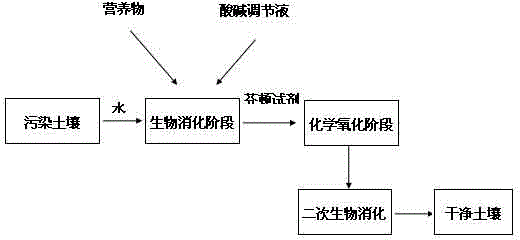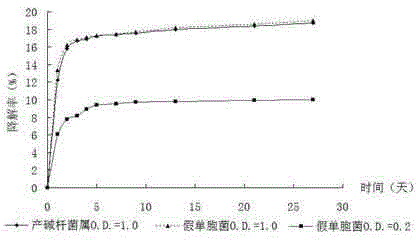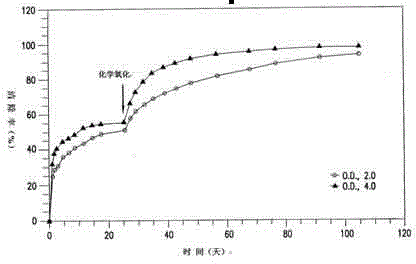Method for degrading polycyclic aromatic hydrocarbon and polychlorocarbon pollutants in soil
A technology of polycyclic aromatic hydrocarbons and polychlorinated hydrocarbons, which is applied in the field of degrading polycyclic aromatic hydrocarbons and polychlorinated hydrocarbon pollutants in soil, and can solve the problems of complex soil biology, long cycle and difficult regulation
- Summary
- Abstract
- Description
- Claims
- Application Information
AI Technical Summary
Problems solved by technology
Method used
Image
Examples
Embodiment Construction
[0016] Such as figure 1 Shown is the schematic diagram of the principle of the present invention. First of all, a certain amount of water needs to be injected into the polluted soil and stirred into mud. If the mud or water sludge is to be treated, it can be directly put into the treatment tank for stirring. Add phosphate buffer to adjust the pH to 4.0-6.0, preferably 5.0. In addition, a certain amount of yeast extract needs to be added as a nutrient source for microorganisms. The added microorganisms were a mixture of Alcaligenes and Pseudomonas. After a period of biological reaction, the pH value will increase slightly, but generally its pH value is not higher than 5.5. At this time, there is no need to adjust the pH value, and Fenton’s reagent can be directly added to the reactant, and after adding Fenton’s reagent, the mud The pH of the mixture can be slightly lowered. But if the pH value is higher than 5.5 at this time, it is necessary to add diluted hydrochloric aci...
PUM
 Login to View More
Login to View More Abstract
Description
Claims
Application Information
 Login to View More
Login to View More - R&D
- Intellectual Property
- Life Sciences
- Materials
- Tech Scout
- Unparalleled Data Quality
- Higher Quality Content
- 60% Fewer Hallucinations
Browse by: Latest US Patents, China's latest patents, Technical Efficacy Thesaurus, Application Domain, Technology Topic, Popular Technical Reports.
© 2025 PatSnap. All rights reserved.Legal|Privacy policy|Modern Slavery Act Transparency Statement|Sitemap|About US| Contact US: help@patsnap.com



